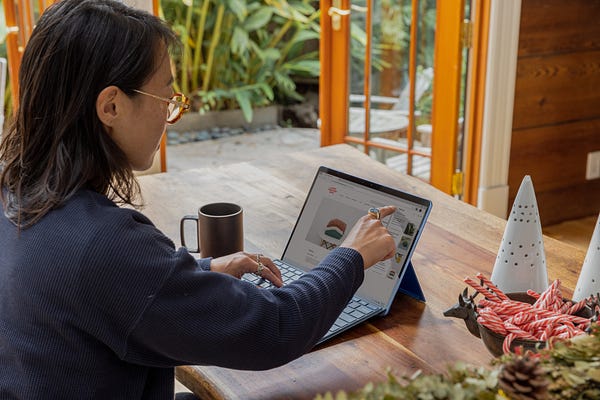Last updated on September 3rd, 2024 at 03:17 am
- Narcissistic Tendencies and Social Media Use
- The Illusion of Connection
- The Role of Likes, Comments, and Followers
- Dopamine-Driven Feedback Loops
- Social Comparison and Self-Esteem Issues
- The Pressure to Maintain an Online Persona
- The Impact on Mental Health
- Strategies for Healthy Social Media Use
- Mindful Usage
- Cultivating Real-World Connections
- Developing a Healthy Self-Image
- The Future of Social Media and Narcissism
- Emerging Technologies and Their Impact
- Potential Solutions and Interventions
- Thank You For Reading. Did this first part pique your interest? There’s so much more to explore! We’ve only scratched the surface of how narcissism is impacting our world.
- Ready For More? Click Here To Read Other Parts!
Are you trapped in the endless cycle of likes, comments, and followers? Picture this: You’ve just posted the perfect selfie. Your phone buzzes. One like. Two likes. Ten likes. Suddenly, you’re refreshing frantically, craving more validation from strangers on the internet. Sound familiar? You’re not alone.
In this digital era, platforms like Instagram, TikTok, and Facebook have become more than just apps – they’re mirrors reflecting our deepest insecurities and desires. But at what cost? As we curate our online personas, are we losing touch with our authentic selves?
This post dives deep into the murky waters of social media narcissism. We’ll explore how the constant need for validation is reshaping our psyche, relationships, and society at large. From the FOMO-inducing highlight reels to the anxiety-inducing comparison game, we’ll uncover the hidden toll of our digital obsessions.
But here’s the kicker – this isn’t just about pointing fingers. It’s about understanding the psychology behind our online behaviors and finding a way back to genuine human connection. So, are you ready to look beyond the filters and face the truth about our social media addiction? Buckle up – this ride might get uncomfortable, but it’s one you can’t afford to miss.
Narcissistic Tendencies and Social Media Use
Social media platforms provide an ideal environment for narcissistic behaviors to flourish. The constant opportunity for self-promotion and the quantifiable nature of social approval can reinforce narcissistic traits.
- Correlation with Narcissism:
A study in the journal Personality and Individual Differences found a positive correlation between narcissistic personality traits and the frequency of Twitter usage and Facebook status updates. - Selfie Culture:
Research published in the journal Frontiers in Psychology found that individuals who post more selfies on social media tend to score higher on measures of narcissism and psychopathy. - Grandiose Exhibitionism:
A study in the journal Cyberpsychology, Behavior, and Social Networking found that Facebook users with more friends and who tagged themselves in photos more often scored higher on the Narcissistic Personality Inventory. - Attention-Seeking Behaviors:
Research in the journal Computers in Human Behavior found that individuals with higher levels of narcissism were more likely to post self-promotional content and engage in attention-seeking behaviors on social media. - Impact on Relationships:
A study in the American Journal of Family Therapy found that higher levels of social media use were associated with increased narcissism and relationship conflicts.
Understanding these tendencies can help in recognizing the 26 signs of narcissistic collapse when they manifest in social media behavior.

The Illusion of Connection
While social media promises to connect us with others, it can often lead to feelings of isolation and loneliness.
- Quantity vs. Quality:
A study in the American Journal of Preventive Medicine found that young adults with high social media usage felt more socially isolated than those who used social media less frequently. - Passive vs. Active Use:
Research published in the Journal of Experimental Psychology found that passive Facebook usage (scrolling through feeds) led to decreased well-being, while active usage (posting, commenting) had no significant effect. - Social Displacement:
A study in the journal New Media & Society found that time spent on social media often displaces face-to-face interactions, which are crucial for developing deep, meaningful relationships. - Fear of Missing Out (FOMO):
Research in the journal Motivation and Emotion found that FOMO was associated with higher levels of social media engagement but also with decreased life satisfaction and increased anxiety. - Echo Chambers:
A study in the Proceedings of the National Academy of Sciences found that social media algorithms often create echo chambers, limiting exposure to diverse viewpoints and potentially increasing polarization.
The illusion of connection fostered by social media can contribute to narcissistic abuse and codependency, as individuals may seek validation and support through superficial online interactions rather than developing genuine, deep relationships.
The Role of Likes, Comments, and Followers
Social media platforms thrive on engagement. The number of likes, comments, and followers a person accumulates has become a measure of social currency. This system of quantifiable social approval has profound effects on our behavior and self-perception.
Dopamine-Driven Feedback Loops
Every time we receive a like or a positive comment on our posts, our brains release a small amount of dopamine, a neurotransmitter associated with pleasure and reward. This creates a feedback loop that encourages us to seek more of these positive interactions.
- The Science Behind the ‘Like’:
A study published in Psychological Science found that the brain’s reward center activates when people see large numbers of likes on their own photos, especially compared to seeing likes on others’ photos. This activation is similar to the response triggered by winning money or eating chocolate. - Frequency of Checking:
According to a survey by Deloitte, Americans check their phones an average of 52 times a day. For many, this frequent checking is driven by the anticipation of new likes or comments. - Addiction Potential:
The constant pursuit of likes and comments can lead to addictive behavior. A study published in the Journal of Behavioral Addictions found that up to 10% of internet users show signs of social media addiction. - Impact on Content Creation:
The dopamine rush from likes influences what kind of content people create and share. A survey by Sprout Social found that 65% of social media users feel pressure to post content that will get a lot of likes and comments. - Age Differences:
Younger users are particularly susceptible to this feedback loop. A study in the journal JAMA Pediatrics found that teens who spend more than three hours a day on social media may be at higher risk for mental health problems.
The dopamine-driven feedback loop created by likes and comments can have serious implications for our mental health and behavior. Narcissistic abuse signs, effects, and treatments can sometimes be traced back to these online interactions, as they shape our self-perception and relationships with others.
Social Comparison and Self-Esteem Issues
Social media platforms provide endless opportunities for social comparison. We constantly see carefully curated highlights of others’ lives, which can lead to feelings of inadequacy and low self-esteem.
- Upward Social Comparison:
A study in the journal Psychology of Popular Media Culture found that people who engage in more upward social comparisons on social media (comparing themselves to those they perceive as better off) experience more negative emotions and lower self-esteem. - FOMO (Fear of Missing Out):
The constant stream of social media posts can trigger FOMO. A study by JWT Intelligence found that 69% of millennials experience FOMO when they see their peers’ posts about exciting or fun activities. - Body Image Concerns:
Exposure to idealized images on social media can negatively impact body image. A meta-analysis published in Body Image found a significant association between social media use and body image concerns, particularly among young women. - Envy and Life Satisfaction:
A study in the Journal of Social and Clinical Psychology found that Facebook use was linked to both depression and lower life satisfaction, with envy playing a crucial mediating role. - The Highlight Reel Effect:
People tend to share only the best moments of their lives on social media. A survey by Anxiety.org found that 60% of people using social media reported it negatively impacted their self-esteem due to unfair comparisons with others.
The constant social comparison facilitated by social media can lead to narcissistic abuse in relationships, as individuals may seek validation and superiority over others to compensate for feelings of inadequacy.

The Pressure to Maintain an Online Persona
Social media encourages users to create and maintain an online persona, often an idealized version of themselves. This pressure can lead to stress, anxiety, and a disconnection from one’s authentic self.
- Impression Management:
A study in the journal Computers in Human Behavior found that people spend a significant amount of time and effort managing their online impressions, often at the expense of their offline relationships and activities. - Authenticity vs. Likes:
Research published in Nature Communications found that posts expressing negative emotions or vulnerabilities received fewer likes and comments, encouraging users to present overly positive personas. - Career Implications:
A survey by CareerBuilder found that 70% of employers use social media to screen candidates during the hiring process, adding pressure to maintain a professional online image. - Digital Stress:
A study in the Journal of Computer-Mediated Communication found that the pressure to be constantly available and responsive on social media leads to increased stress levels, particularly among young adults. - The ‘Selfie’ Phenomenon:
Research published in the International Journal of Mental Health and Addiction found a link between excessive selfie-taking and narcissistic traits, body dysmorphia, and other mental health issues.
The pressure to maintain an online persona can contribute to narcissistic personality disorder symptoms, as individuals become increasingly focused on presenting an idealized image of themselves to the world.

The Impact on Mental Health
The constant pursuit of likes, comments, and followers can have serious implications for mental health.
- Depression and Anxiety:
A study published in the journal Depression and Anxiety found a strong link between social media use and increased depression and anxiety symptoms, particularly among young adults. - Sleep Disturbances:
Research in the Journal of Youth Studies found that nighttime social media use was associated with poorer sleep quality, lower self-esteem, and higher levels of anxiety and depression. - Body Image Issues:
A meta-analysis published in Psychology of Popular Media Culture found a significant association between social media use and body image concerns, particularly among adolescents and young women. - Cyberbullying:
A study in the journal JAMA Pediatrics found that victims of cyberbullying were at increased risk for depression, anxiety, and suicidal thoughts and behaviors. - Addiction:
Research published in Addiction Biology found that excessive social media use activates the same brain regions as drug addiction, suggesting that social media addiction may be a real and serious issue.
Understanding these mental health impacts is crucial in recognizing the psychological impact of narcissistic abuse and its potential long-term effects.
Strategies for Healthy Social Media Use
While the effects of social media on narcissistic tendencies and mental health can be concerning, there are strategies individuals can employ to use these platforms in a healthier manner.
Mindful Usage
Practicing mindfulness in social media use can help mitigate its negative effects.
- Set Time Limits:
A study in the Journal of Social and Clinical Psychology found that limiting social media use to 30 minutes per day led to significant reductions in loneliness and depression. - Be Intentional:
Research in the journal Information Systems Journal suggests that using social media with clear, purposeful intentions can lead to more positive outcomes than aimless scrolling. - Practice Digital Detox:
A study in the Journal of Social Psychology found that taking regular breaks from social media can improve overall well-being and life satisfaction. - Mindful Posting:
Research in Cyberpsychology, Behavior, and Social Networking suggests that posting with intention and authenticity, rather than for likes or followers, can lead to more positive social media experiences. - Gratitude Practice:
A study in the journal Computers in Human Behavior found that using social media to express gratitude was associated with increased well-being and life satisfaction.
Cultivating Real-World Connections
Balancing online interactions with real-world connections is crucial for maintaining mental health and authentic relationships.
- Prioritize Face-to-Face Interactions:
A study in the journal PLOS ONE found that face-to-face social interactions were associated with greater well-being compared to online interactions. - Join Offline Communities:
Research in the American Journal of Community Psychology suggests that participation in offline community activities can significantly boost social connection and well-being. - Practice Active Listening:
A study in the Journal of Positive Psychology found that practicing active listening in face-to-face conversations can improve relationship quality and personal well-being. - Engage in Shared Activities:
Research in the Journal of Happiness Studies found that engaging in shared activities with others, rather than simply spending time together, led to stronger social bonds and increased happiness. - Volunteer:
A study in the journal Health Psychology found that volunteering was associated with increased social connection, improved mental health, and greater life satisfaction.
Developing a Healthy Self-Image
Building a strong sense of self-worth that isn’t dependent on social media validation is key to combating narcissistic tendencies and maintaining mental health.
- Self-Compassion:
Research in the journal Self and Identity found that practicing self-compassion can buffer against the negative effects of social comparison on social media. - Identify Personal Values:
A study in the Journal of Personality and Social Psychology suggests that reflecting on personal values can reduce defensiveness and increase openness to change. - Set Intrinsic Goals:
Research in the Journal of Positive Psychology found that setting and pursuing intrinsic goals (those aligned with personal values and growth) led to greater well-being than pursuing extrinsic goals (like fame or wealth). - Practice Mindfulness:
A meta-analysis published in Clinical Psychology Review found that mindfulness-based interventions were effective in reducing symptoms of anxiety and depression. - Engage in Self-Reflection:
A study in the journal Psychological Science found that engaging in self-reflection can lead to greater self-awareness and improved decision-making.
By implementing these strategies, individuals can work towards breaking free from the narcissists’ emotional rollercoaster manipulation that social media can sometimes perpetuate.
The Future of Social Media and Narcissism
As we continue to grapple with the effects of social media on our psyche and society, it’s important to consider future trends and potential solutions.
Emerging Technologies and Their Impact
New technologies are constantly reshaping our digital landscape and how we interact online.
- Virtual Reality (VR) and Augmented Reality (AR):
A study in the journal Computers in Human Behavior predicts that VR and AR technologies could intensify issues of self-presentation and social comparison, potentially exacerbating narcissistic tendencies. - Artificial Intelligence (AI) and Personalization:
Research in the journal Big Data & Society suggests that AI-driven personalization of social media content could create more intense echo chambers, potentially reinforcing narcissistic worldviews. - Blockchain and Decentralized Social Networks:
A paper in the IEEE Access journal proposes that blockchain-based social networks could provide more user control and privacy, potentially mitigating some of the narcissistic tendencies encouraged by current platforms. - Wearable Technology:
A study in the International Journal of Environmental Research and Public Health predicts that the integration of social media with wearable technology could lead to even more constant connectivity and potential for narcissistic behaviors. - Digital Wellbeing Tools:
Research in the journal Internet Interventions suggests that built-in digital wellbeing tools in social media platforms could help users manage their usage and mitigate negative effects.

Potential Solutions and Interventions
As awareness of the negative impacts of social media grows, researchers and developers are exploring potential solutions.
- Education and Digital Literacy:
A study in the journal New Media & Society found that improving digital literacy skills could help individuals navigate social media more critically and healthily. - Platform Design Changes:
Research in the journal Nature Human Behaviour suggests that redesigning social media platforms to promote more meaningful interactions could reduce narcissistic behaviors and improve user wellbeing. - Regulatory Approaches:
A paper in the Harvard Law Review proposes that regulatory measures, such as mandating transparency in algorithm design, could help mitigate some of the negative effects of social media. - Psychological Interventions:
A meta-analysis in the Journal of Medical Internet Research found that online cognitive-behavioral therapy interventions could be effective in treating internet addiction and improving mental health. - Promoting Offline Engagement:
Research in the Journal of Social and Personal Relationships suggests that social media platforms could be designed to encourage offline meetups and activities, promoting more balanced social interactions.
Thank You For Reading. Did this first part pique your interest? There’s so much more to explore! We’ve only scratched the surface of how narcissism is impacting our world.
Continue your journey through all 26 parts of this series to gain a comprehensive understanding on the bigger picture.
Each part builds on the last, providing you with a nuanced and thorough exploration of this complex issue. Don’t miss out on the full picture.
Ready For More? Click Here To Read Other Parts!
The Narcissism Epidemic: How Self-Obsession Is Reshaping Society Part 1
The Narcissism Epidemic: Why Younger Generations More Narcissistic? Part 2
The Narcissism Epidemic: How Technology Is Fueling the Flames of Narcissism Part 3
The Narcissism Epidemic: Navigating Narcissism at Workplace Part 4
The Narcissism Epidemic: The Impact of Narcissistic Leadership on Company Culture Part 5
The Narcissism Epidemic: Fame, Fandom, and Celebrity Culture Part 6
The Narcissism Epidemic: How Media Cultivates Celebrity Worship Part 7
The Narcissism Epidemic: The Impact of Celebrity Narcissism on Society Part 8
The Narcissism Epidemic: How Social Media Feeds Your Inner Narcissist Part 9
The Narcissism Epidemic: Social Media and Self-Obsession Part 10
The Narcissism Epidemic: The Dark Side of Social Media Validation Part 11
The Narcissism Epidemic: When Parents’ Self-Absorption Affects Their Children Part 12
The Narcissism Epidemic: The Effects of Narcissistic Parenting on Children Part 13
The Narcissism Epidemic in Leadership: Brilliance or Tyranny? Uncover the Paradox Part 14
The Narcissism Epidemic: The Dark Side of Narcissistic Leadership Part 15
The Narcissism Epidemic: The Dark Side of Internet Fame: From Influence to Ego Part 16
The Narcissism Epidemic: The Role of Social Media Influencers in Promoting Narcissism Part 17
The Narcissism Epidemic: The Influencer-Narcissism Connection Exposed Part 18
The Narcissism Epidemic: How Does Narcissism Fuel (or Hinder) Artistic Genius? Part 19
The Narcissism Epidemic: The Impact of Narcissism on Artistic Process Part 20
The Narcissism Epidemic: When Artist Egos Overshadow Their Work Part 21
The Narcissism Epidemic: The Dark Side of Charismatic Politicians Part 22
The Narcissism Epidemic in Politics: When Ego Drives Policy Part 23
The Narcissism Epidemic: The Impact of Narcissistic Leadership on Governance Part 24
The Narcissism Epidemic of Economics: Consumerism and Self-Image Part 25
The Narcissism Epidemic: The Impact of Narcissism on Individuals and Society Part 26




